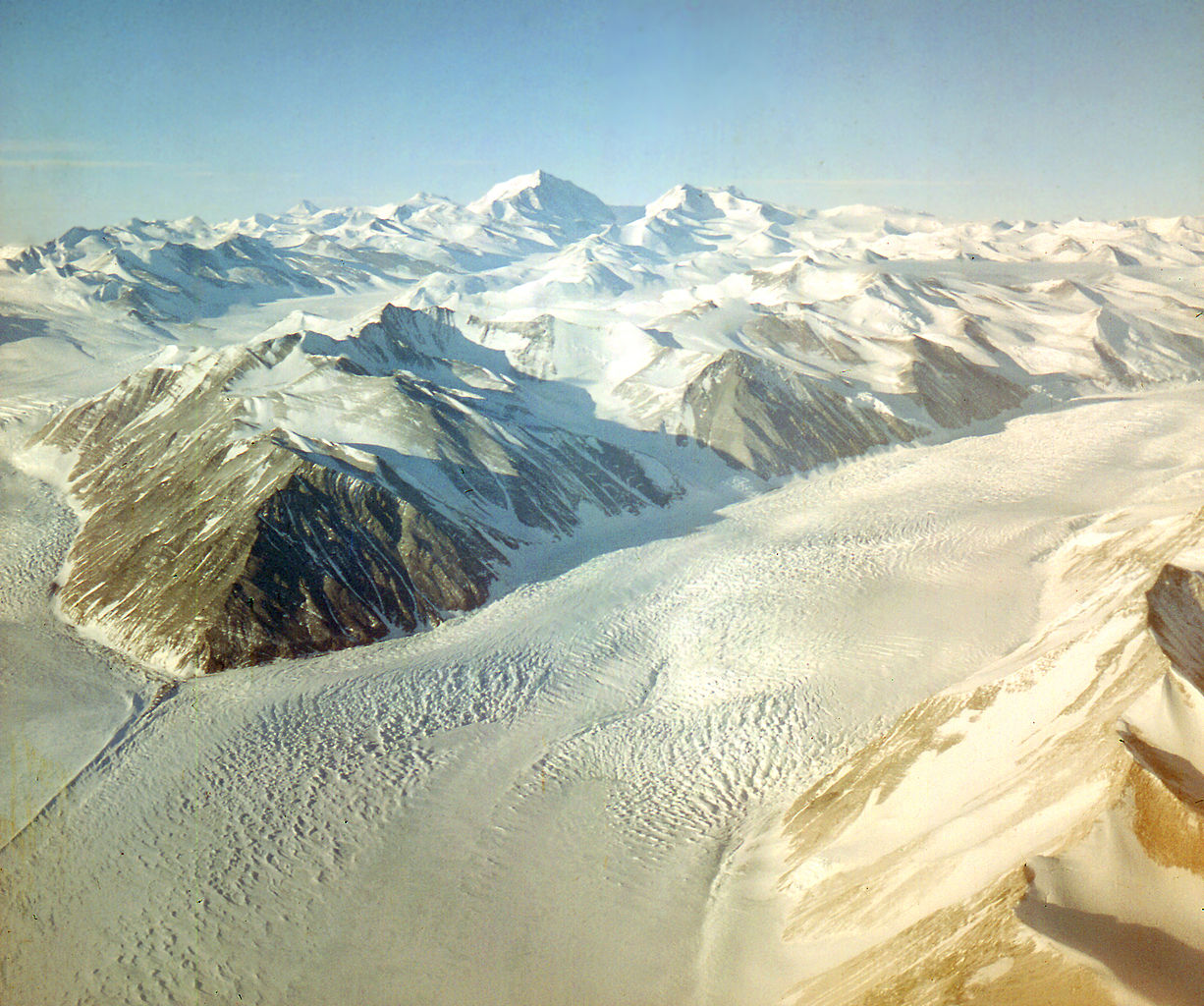Difference between revisions of "Template:POTD protected"
Westarctica (talk | contribs) |
Westarctica (talk | contribs) |
||
| Line 1: | Line 1: | ||
{| role="presentation" style="margin:0 3px 3px; width:100%; text-align:left; background-color:transparent; border-collapse: collapse; " | {| role="presentation" style="margin:0 3px 3px; width:100%; text-align:left; background-color:transparent; border-collapse: collapse; " | ||
|style="padding:0 0.9em 0 0;" | [[File: | |style="padding:0 0.9em 0 0;" | [[File:Beardmore Glacier - Antarctica.jpg|300px]] | ||
|style="padding:0 6px 0 0"| | |style="padding:0 6px 0 0"| | ||
The '''[[ | The '''[[Beardmore Glacier]]''' in [[Antarctica]] is one of the largest valley [[glacier]]s in the world, being 200 km (125 mi) long and having a width of 40 km (25 mi). It descends about 2,200 m (7,200 ft) from the Antarctic Plateau to the [[Ross Ice Shelf]] and is bordered by the Commonwealth Range of the [[Queen Maud Mountains]] on the eastern side and the Queen Alexandra Range of the Central [[Transantarctic Mountains]]. | ||
The | The glacier is one of the main passages through the Transantarctic Mountains to the great polar plateau beyond, and was one of the early routes to the [[South Pole]] despite its steep upward incline. The glacier was discovered and climbed by [[Ernest Shackleton]] during his Nimrod Expedition of 1908. Although Shackleton turned back before reaching the [[South Pole]], he established the first proven route towards the pole and, in doing so, became the first person to set foot upon the polar plateau. | ||
<p><small>Image credit: University of Maine </small></p> | <p><small>Image credit: University of Maine </small></p> | ||
[[:Category:Images|'''(More Featured Images)''']] | [[:Category:Images|'''(More Featured Images)''']] | ||
<div class="potd-recent" style="text-align:right;"> | <div class="potd-recent" style="text-align:right;"> | ||
Revision as of 17:35, 23 September 2019

|
The Beardmore Glacier in Antarctica is one of the largest valley glaciers in the world, being 200 km (125 mi) long and having a width of 40 km (25 mi). It descends about 2,200 m (7,200 ft) from the Antarctic Plateau to the Ross Ice Shelf and is bordered by the Commonwealth Range of the Queen Maud Mountains on the eastern side and the Queen Alexandra Range of the Central Transantarctic Mountains. The glacier is one of the main passages through the Transantarctic Mountains to the great polar plateau beyond, and was one of the early routes to the South Pole despite its steep upward incline. The glacier was discovered and climbed by Ernest Shackleton during his Nimrod Expedition of 1908. Although Shackleton turned back before reaching the South Pole, he established the first proven route towards the pole and, in doing so, became the first person to set foot upon the polar plateau. Image credit: University of Maine |